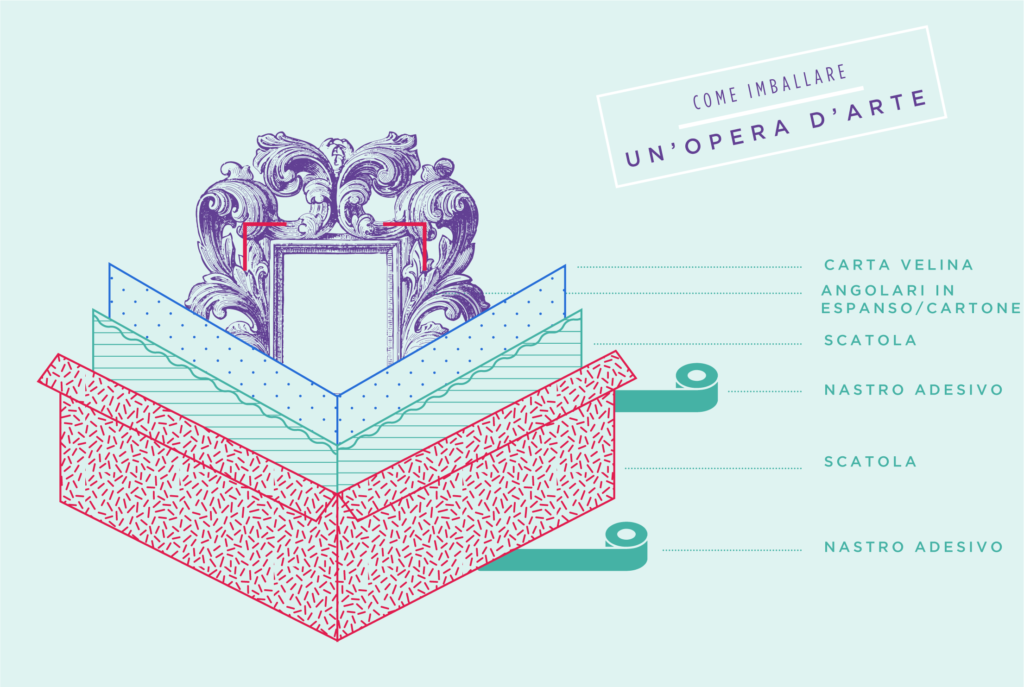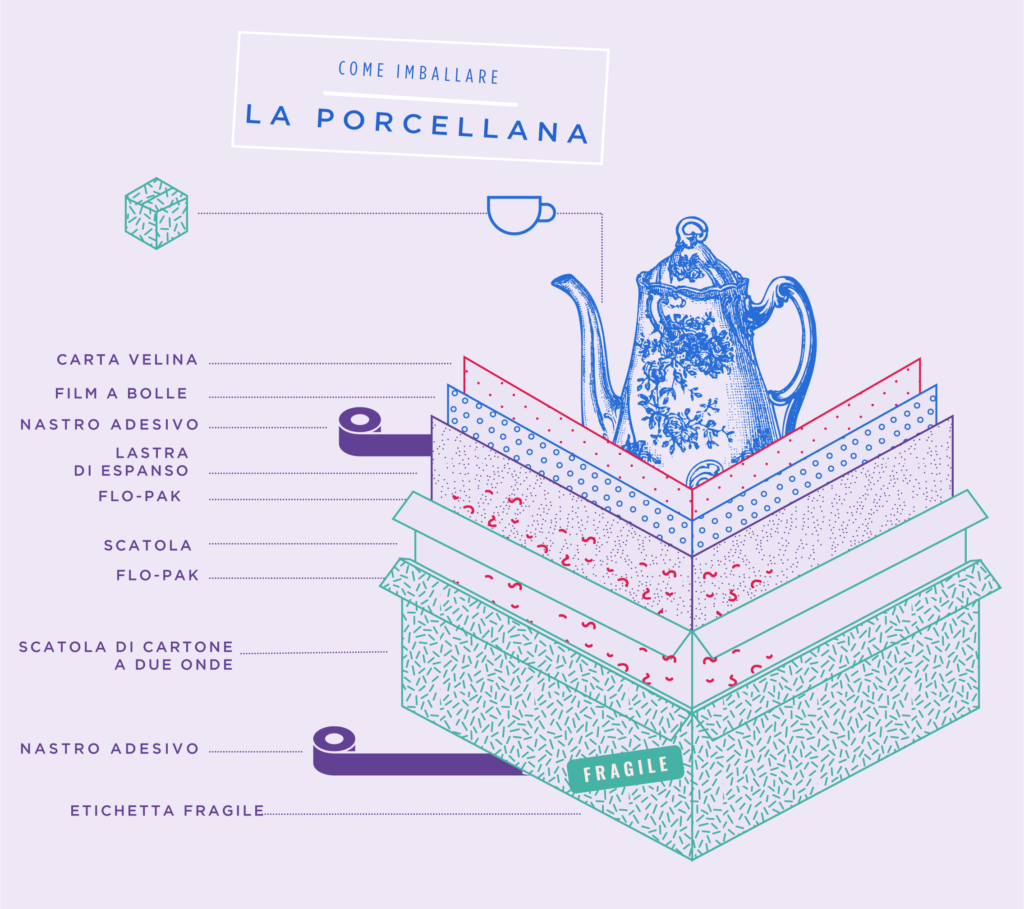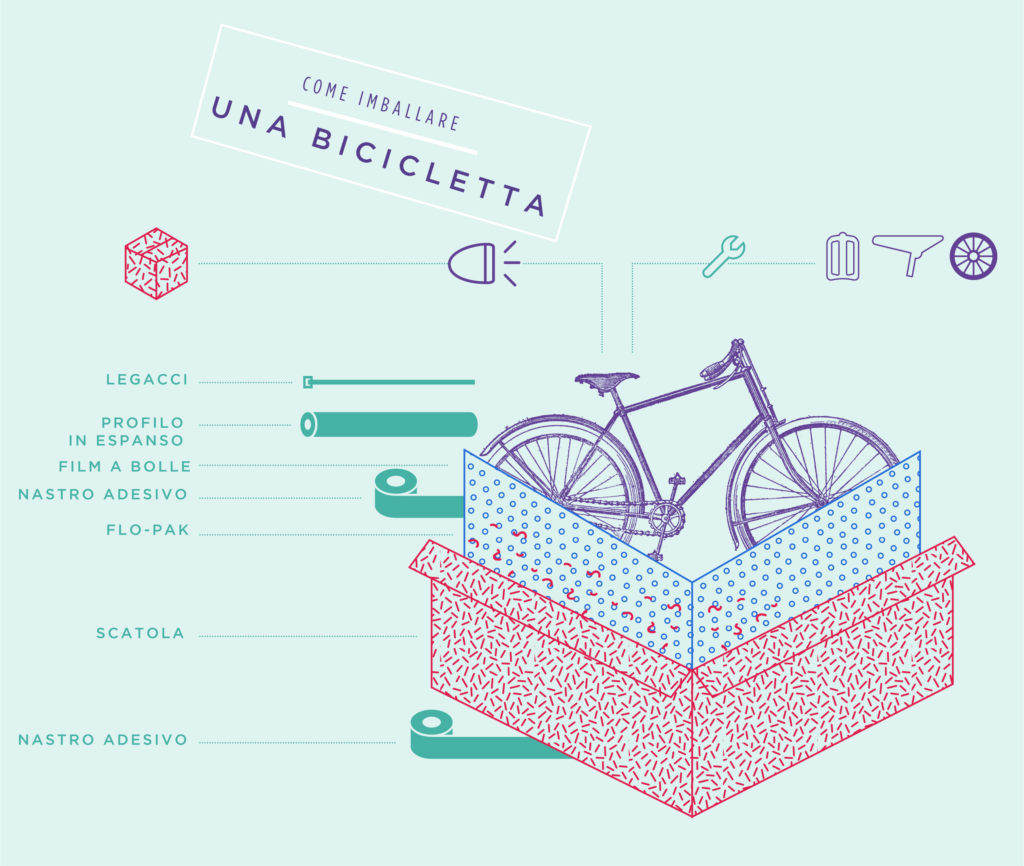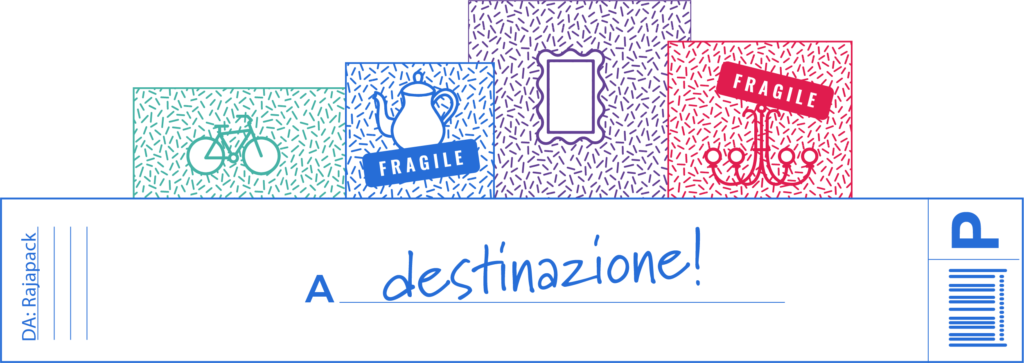With the exponential growth of online shopping, consumer expectations have also increased.
Today you can buy anything in just a few clicks, which means that the packaging industry has to continuously innovate and make sure that all products purchased on the web arrive intact at their destination.
We know how to protect your products.
Have you ever had to ship fragile and delicate or specially shaped objects and not known how to pack them?
Follow our step-by-step guides on how to pack some of the most difficult items to protect during shipping.
How to pack a chandelier
Chandeliers are extremely delicate and fragile. Do you have to move house and need to pack your chandelier but don’t know where to start? Follow our advice!
What you need:
- A box
- Bubble wrap
- Adhesive tape
- Foam film
- Polystyrene Flo-Pak
- Self-locking ties (cable ties)
- Fragile and Tall Labels

Ideally, you should pack a chandelier while it is hanging, if this is not possible place it on a layer of cushions. Placing it on a hard surface could damage it.
First, find a suitable box, it should ideally be about 7 cm wider on each side than the chandelier. It is also important to consider the weight of the object, for heavier objects it is best to use a two-wave box for adequate protection and strength.
- Remove all bulbs and pack them separately. Check that there are no other removable parts, if there are, follow the same procedure as for the bulbs.
- Now take care of the sharp corners, they are at great risk of damage! Wrap them with foam film and seal with tape. Pay close attention to the top and bottom, these are the ones that will have to withstand the most pressure. Again, use foam film or bubble wrap.
- Make sure the bottom of the box is well sealed with tape, then put on a layer of foam film or bubble wrap. Use the ties to secure the wires and then insert the chandelier into the box as upright as possible. Fill the gaps inside the box with polystyrene chips ensuring that the chandelier cannot move.
- Put another layer of foam film or bubble wrap over the chandelier and tape the box shut. Apply the ‘ fragile’ label to all boxes, even those containing the bulbs, and make sure to apply the ‘high’ label in the direction in which the chandelier was placed.
How to pack paintings
Works of art are very valuable and therefore special attention must be paid to packaging.
What you need:

- Use flat boxes to pack your paintings, those with lids are perfect because they are adaptable in height: once you have purchased a box you can use it for paintings, mirrors and works of different sizes
- Wrap the painting in tissue paper; as well as protecting it, it also enhances it for optimal presentation!
- It is also very important to protect the edges with foam corners, so the product will not move during shipping.
- Finally, if you want additional protection, insert small cardboard interlayers on the sides of the work
How to pack porcelain
Porcelain objects can be tricky when it comes to packing them. Cups and glasses are definitely among the fragile objects par excellence.
Nobody likes to receive a chipped teapot, but the risk is just around the corner! Find out how to avoid this problem.
What you need:
- Tissue paper
- Bubble wrap
- Adhesive tape
- Polystyrene Flo-Pak
- Foam sheet
- Cardboard box
- Two-wave cardboard box, 7cm wider than the other
- Fragile label

- Before you start make sure you have enough space, use a large table or spread a sheet out and place directly on the floor.
You need a box 2.5 cm wider than the porcelain object you want to pack. The second, two-wave box must be at least 7 cm wider than the first.
- Arrange all the ceramic objects you intend to send and divide them by size.
If they differ in size or are extremely fragile, consider dividing them into small boxes that you will then place in the second two-wave box. - Wrap each item in tissue paper and seal with tape, repeat this operation with bubble wrap and seal again with tape
- Take the smaller box and cut out two pieces of foam sheet the right size to fit inside it. Place the first sheet on the bottom of the box, immediately afterwards your object wrapped in tissue paper and bubble wrap and finally about 5 cm of chips. Add the other objects, always interspersing them with crisps.
- Continue until the box is almost full, at which point insert the second piece of foam sheet
- Add approximately 7 cm of chips to the bottom of the two-wave box and place the smaller box inside using the rest of the Flo-Pak to fill all spaces. Now all you have to do is seal the second box with tape
- Apply the “fragile” label
How to pack a bicycle
Thinking of transporting a bicycle? Here’s what you need to know
What you need:
- Bubble wrap
- Foam profile
- Flo-Pak polystyrene chips
- A strong box big enough to hold the bike
- Small boxes or bags for removable parts
- Self-locking ties
- A spanner
- Allen key (for disassembling the various parts)

- Start by dismantling accessories such as lights, mudguards and bottle cage
- Remove the saddle, if there are any screws remember to put them in a separate bag to prevent them from being lost.
Use the spanner or Allen key to remove the pedals
If you can also remove the handlebar, otherwise lower it as far as possible and turn it 90° by aligning it with the bicycle frame.
You will now have to remove the front wheel using the spanner. Remember to deflate it a little before packing it.
- Use theties to secure the handlebar to the frame and the foam profile to protect the frame from scratches. Also fix the profile with the ties. Where the profiles cannot be used, apply bubble wrap and seal it with tape
Remember to also cover the sprocket and chain with bubble wrap.
- Fill the bottom of the box with chips and place the frame. Now slide the wheel onto the side of the frame. Add the other small boxes or bags with accessories or screws inside and anything else you have taken apart in the process
Now fill all the spaces in the box with chips. Once done, close the box with tape and you are ready to ship your bike!
Need advice on how to pack fragile items?
Call us on 848 815 815 or write to info@rajapack.it














